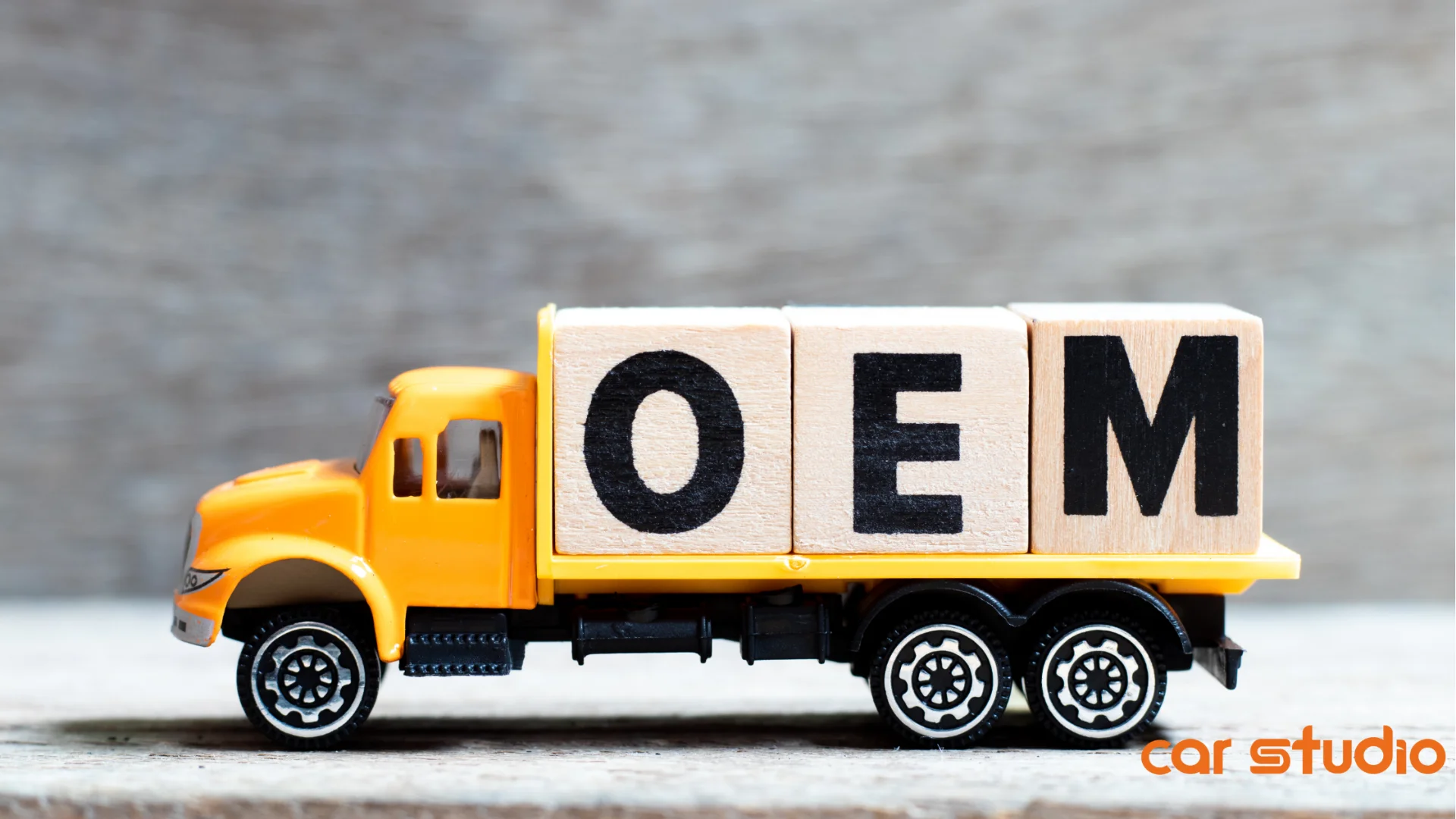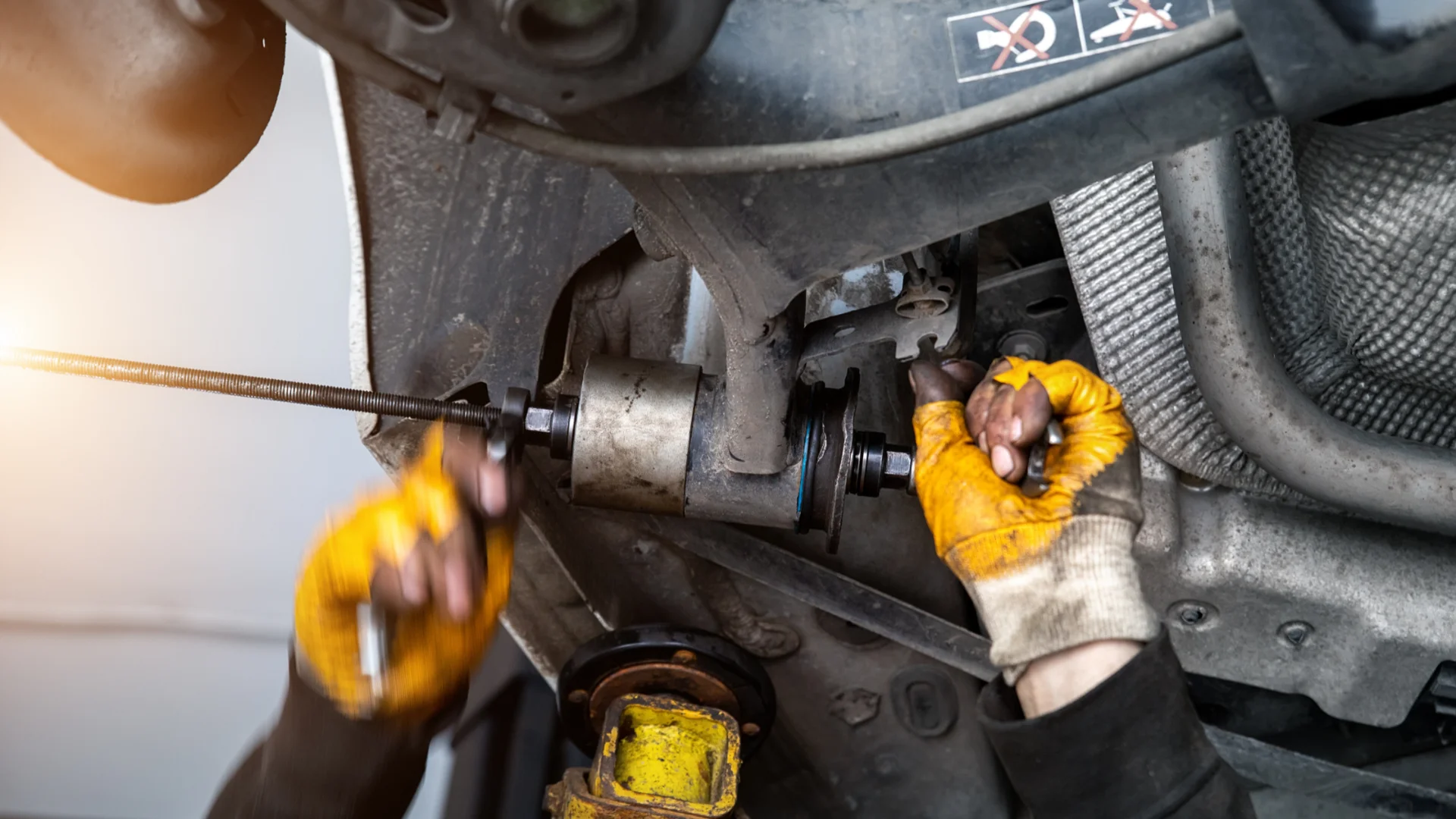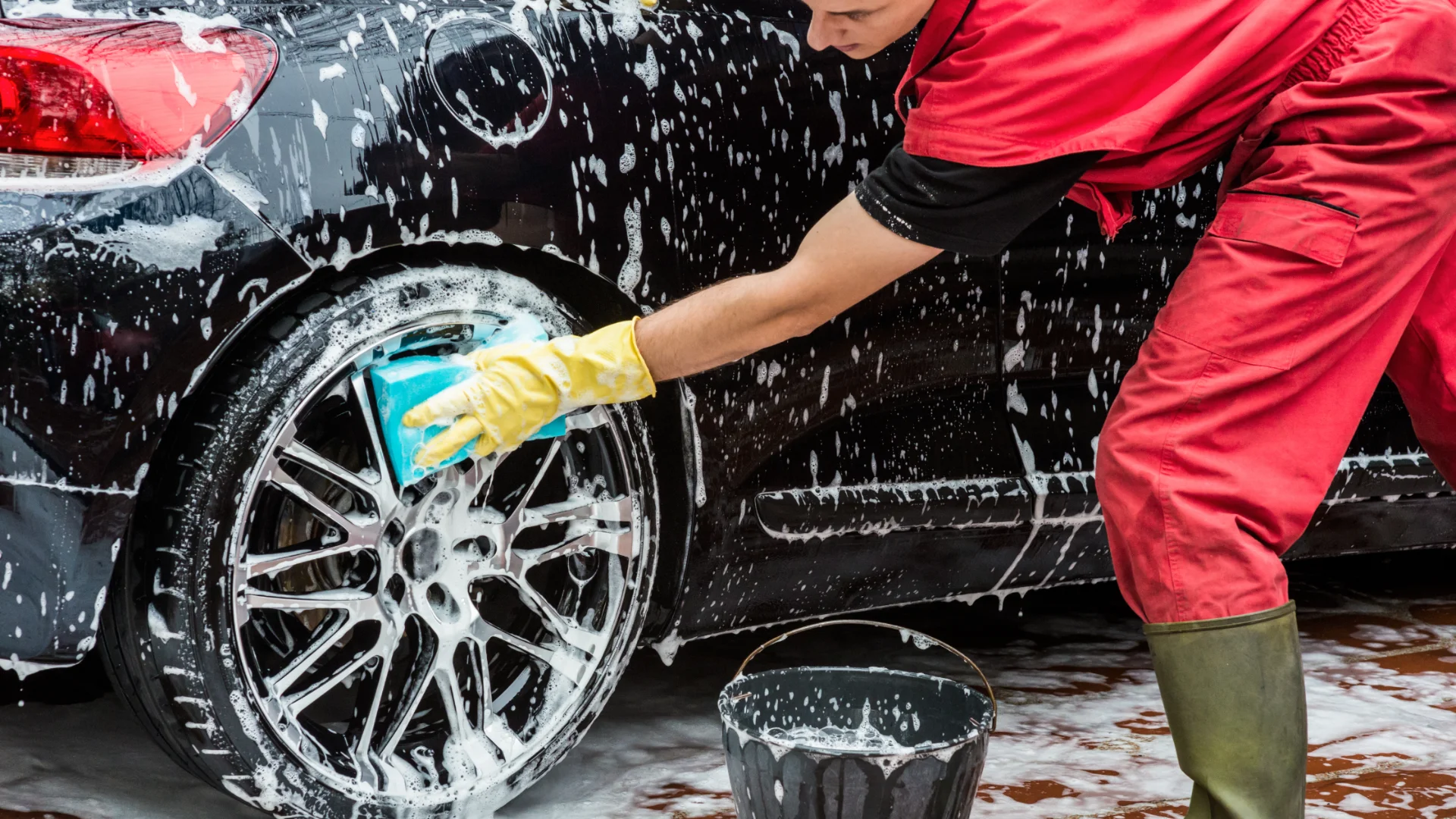
AI Imagery as a Brand Weapon: How OEMs Scale Visual Identity
AI Imagery as a Brand Weapon: How OEMs Scale Visual Identity
In today’s automotive landscape, the real competition isn’t just happening on the road it’s happening online. Every photo, every thumbnail, every visual touchpoint tells a story about a brand’s precision, innovation, and attention to detail. For Original Equipment Manufacturers (OEMs), this digital first impression has become a silent but powerful salesman.
Artificial Intelligence (AI) is now redefining how automotive brands craft that story. It’s not only about making photos look better it’s about shaping visual identity at scale, with consistency and intent. Let’s dive into how AI is transforming automotive imagery and why it’s quickly becoming a strategic weapon for OEMs aiming to build strong, recognizable, and scalable brands.
Why Visual Identity Matters in Automotive Marketing
The Role of High-Quality Visuals
Cars aren’t just products they’re emotional purchases. People don’t just buy horsepower; they buy how that power looks and feels. A high-quality image instantly signals quality, professionalism, and care. In fact, studies suggest that visually appealing content can increase user engagement by nearly 80%.
For OEMs, the logic is simple: a car that looks premium online will be perceived as premium offline. When the first photo of a model radiates confidence and clarity, it builds subconscious trust long before a sales rep ever speaks to the customer.
Visual Consistency Across Platforms
Consistency is what separates a brand from a collection of images. The same car, when presented differently across regions or dealerships, weakens the visual narrative. That’s why OEMs have invested so heavily in strict brand guidelines.
But enforcing those guidelines manually across thousands of images, models, and markets has been almost impossible. This is exactly where AI steps in, guaranteeing every photo aligns perfectly with brand standards without requiring endless rounds of manual editing.

How AI Transforms Automotive Imagery
From Raw Upload to Polished Listing
Traditionally, getting a “studio-quality” car photo meant hauling vehicles to professional setups, coordinating photographers, and spending days in post-production.
Today, AI can transform an ordinary dealership photo into a polished, on-brand visual in minutes.
As explained in “From Upload to Listing: How AI Transforms the Car Imaging Workflow”, this technology automates background cleanup, lighting correction, and even brand styling. Dealers can upload raw photos AI takes care of the rest, ensuring every output meets brand visual standards.
This shift not only saves time and cost, it also allows OEMs to maintain control of their brand’s visual language, even across thousands of independently operated dealer networks.
Scalability Without Compromise
Every OEM faces a common scaling dilemma: How can we maintain visual excellence when producing tens of thousands of images per month?
AI answers this by offering image pipelines that can process vast inventories while maintaining strict consistency. The “AI Car Imaging Workflow: Step-by-Step Revolution” post breaks down how this automation standardizes lighting, reflections, and framing ensuring every car photo looks unmistakably “on brand.”
It’s a quiet revolution that brings industrial efficiency to creativity producing beautiful, authentic images at a fraction of traditional cost and time.
Integration into Dealer and OEM Systems
Modern AI platforms don’t operate in isolation. As covered in “AI Platform Implementation: What Dealers Must Know in 2025”, they integrate seamlessly with digital asset management (DAM) systems, online inventory tools, and even dealer CRMs.
That means new images are automatically enhanced, branded, and published across every platform from internal systems to public listings without the marketing team needing to lift a finger.
The Real-World Impact on Digital Marketing
1. Enhanced Online Presence

Most buyers now start their car search online. AI-enhanced visuals help listings stand out, capture attention, and keep potential customers browsing longer. The result? Higher engagement and stronger brand perception.
2. Faster Time-to-Market
AI’s automation drastically reduces turnaround time. Vehicles can go from photography to live listing in minutes instead of days a crucial advantage in fast-moving markets and seasonal campaigns.
3. Improved Click-Through and Conversion Rates
AI-refined images aren’t just prettier; they perform better. Clean, well-balanced visuals lead to significantly higher click-through rates and longer on-page engagement. When every image across your listings exudes consistency, it sends one powerful message: this brand is professional and trustworthy.
Scaling Identity Across OEM Networks
The challenge for global OEMs has never been about producing a great image it’s about producing thousands of great images that look like they belong to the same brand family.
With AI, a visual signature becomes enforceable: the same lighting mood, angles, and tone across every model and geography.
It’s also about democratizing quality. Dealers with limited photography resources can now generate visuals that look as polished as the manufacturer’s studio campaigns. AI bridges the gap between corporate brand standards and local dealer realities finally aligning everyone under one visual identity.
The Human Touch: Authenticity and Emotion
As someone who spends time browsing online car listings, I can instantly tell when an image “feels right.” The background is clean, the reflections look natural, and there’s a subtle emotional pull you want to click it.
That’s the paradox: AI doesn’t replace the human eye; it amplifies it. By taking over repetitive tasks like cleanup and enhancement, AI lets humans focus on creativity on telling the story behind the machine.
That balance of automation and authenticity is where visual storytelling truly shines.
The Strategic Edge
Incorporating AI into visual strategy is not merely an operational upgrade it’s a competitive differentiator.
Brands that master visual consistency project confidence. They stand out in crowded marketplaces. They turn listings into experiences.
AI gives OEMs the ability to scale visual identity, shorten time-to-market, and cut costs all while elevating quality. That combination is rare, and it’s exactly why AI imagery is becoming a strategic asset, not just a tool.
Conclusion
The automotive industry has always been about design, emotion, and performance. Now, those principles extend to how cars are seen online.
By embracing AI-driven imagery, OEMs can align their entire ecosystem from headquarters to dealerships under a single, powerful visual identity. It’s more than efficiency; it’s about shaping how the world perceives your brand, one image at a time.
For any automotive brand ready to future-proof its visual strategy, now’s the time to act.
Explore how AI can redefine your brand’s digital presence through Car Studio AI’s solutions.

Frequently Asked Questions
Q: What exactly does AI do in car imagery?
AI plays the role of a tireless digital studio assistant that never loses focus. It automatically enhances and standardizes car photos cleaning messy or distracting backgrounds, correcting exposure and lighting, adjusting reflections, and framing vehicles in a consistent, brand-approved composition. Beyond simple editing, AI understands visual patterns: it can detect where the car should be centered, match the angle of the shadow to previous campaigns, and even maintain uniform contrast and tone across thousands of images.
Think of it as giving every dealership access to a world-class photography team without actually hiring one. The system handles all repetitive technical work, leaving marketing and design teams free to focus on creativity and storytelling instead of tedious post-production.
Q: How does AI ensure consistency across platforms?
Consistency is the secret language of trust. When a brand’s visuals look uniform whether you’re on Instagram, an e-commerce listing, or a dealership website it creates instant recognition. AI makes this possible by applying pre-defined visual standards to every image that passes through the system. These standards include lighting preferences, background color, framing ratios, logo placement, and even how reflections appear on glossy surfaces.
This automation means that even if photos are taken by different photographers, in different lighting conditions, or with different cameras, the end results all “speak” the same visual language. The brand identity stays intact everywhere from global OEM websites to local dealer listings protecting years of marketing investment with every single upload.
Q: Can it integrate with our existing systems?
Yes, and that’s one of the biggest reasons OEMs and dealer networks are adopting AI-driven imaging. Modern AI platforms are built with integration in mind: they connect directly to digital asset management (DAM) systems, inventory databases, and even online marketplace APIs.
When a photo is uploaded into your existing workflow say, by a dealer using a mobile app or web portal the AI processes it automatically in the background. Within minutes, the enhanced, branded image is sent back into your asset library or live listing. There’s no need for manual uploading, renaming, or transferring files between systems.
This level of automation not only saves time but also minimizes human error. It ensures that every image across your organization goes through the same AI pipeline, keeping your visuals consistent, compliant, and ready to publish instantly.
Q: Is it cost-effective?
Absolutely in fact, cost reduction is one of AI imagery’s most tangible benefits. Traditional automotive photography often involves studio rentals, lighting crews, transport logistics, and multiple rounds of manual retouching. Each of those steps adds up. AI eliminates most of that overhead.
Once the initial visual standards are set, the platform processes thousands of photos automatically. What previously cost hundreds of dollars per session can now be achieved in minutes, at a fraction of the price without compromising quality.
Moreover, the savings go beyond just production. Faster turnaround means vehicles go live sooner, reducing days-to-listing and accelerating sales velocity. Over time, this improves inventory rotation and revenue flow a financial gain that goes far beyond the cost of imagery alone.
Q: Does AI imagery really affect buyer decisions?
It does and more profoundly than most people realize. In the digital buying journey, the image is often the very first touchpoint between brand and customer. Before they read a single spec or feature, buyers see. That split-second impression determines whether they stay, click, or move on.
AI-enhanced images showcase every vehicle at its absolute best: balanced lighting, clear contours, natural shadows, and clean surroundings. This doesn’t just make the car look good it signals professionalism, care, and brand credibility. Buyers interpret this subconsciously as trust.
According to performance data cited in Car Studio AI’s workflow article, listings with consistent, high-quality visuals see significantly higher click-through and engagement rates. When every image feels refined and authentic, it reassures potential buyers that what they see is what they’ll get transforming curiosity into confidence, and confidence into conversion.
